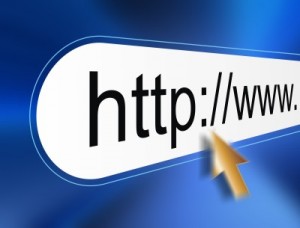Hi folks,
Not sure if you’ve heard this or not, but this past week in social media news an article entitled Social Media’s Massive Failure at The Ad Contrarian made a lot of refreshing waves. (Pun intended). In the article, the author talks about how Pepsi spent millions of dollars on a social campaign wasted their money. Why? Even though the campaign was successful in every way, shape and form according to what a social media marketer might expect, the campaign didn’t result in higher sales for the company. Hence, millions of dollars “lost.”
I’m going to be blunt. “Well, duh!”
Now, to explain my position. First, social media has its own currency and that unit of measurement is not in dollars and cents. It’s people. Yes, people buy things. That is true, but social media has the word “social” in it for a reason. It’s not primarily about shopping, it’s about sharing. Ergo, unless you make the social media campaign about getting people to buy a new product, it is not going to automatically result in higher sales. From the articles I’ve read, it sounds like the people at Pepsi knew this and were willing to test what they knew about the digital space to see what kind of an effect it might have. For that? I say: “Awesome!” Sometimes it’s the only way you learn. However, it does make me question what their goal was in the first place.
So, let’s look critically at the Pepsi Refresh campaign and see if we can’t figure out why this didn’t result in higher profitability for the company. I go to Pepsi’s Facebook page which asks me to click to support. Okay, if you were to show me this page before the campaign even started I would have said: “You will not make money off of this.” Why? Well, on the first page we see the word “support,” which means I suspect this campaign has something to do with a charity. The requirement for me to do something good is to click “Like.” That’s it. (No seriously, that’s all you have to do.) Sure enough, when we get to the page we see that I’ve done a good thing and I am automatically rewarded with the information about all the good things that this campaign is doing. So here, to pay for the charity efforts you have to take an action. Your reward is instantaneous. Out of sight? Out of mind. Boom. End of story. Immediate action, instant pay-off, no long-lasting impression.
In this regard, I argue their social media was successful if you look at currency in context.
To convert Pepsi fans into revenue-generating customers, here’s how I would have approached this campaign:
Stick with the “do good things” idea because that is a great angle to take. Set aside concerns about the volume of Facebook “likes” and Twitter followers. Nine times out of ten, those concerns are unwarranted — especially for uber-big brands like this. When it comes to conversion, it doesn’t matter how many visits you get or how many fans you have. What matters is what percentage of those people will convert into customers. Social media is never a one-to-one relationship because it depends on the volume of friends and followers you have in addition to a number of other factors. There’s no guarantee that you’ll even see a campaign which is often why so much money is dumped into these efforts.
In this vein, I’d build the campaign from the end goal up. So, if the goal is to increase Pepsi’s revenue through engaging people to work with Pepsi on a charitable campaign, then you absolutely need a financial component. I would have done small scale testing in this regard before launching the super big mega millions of dollars initiative, by looking at different options. First? Send a Friend a coupon. Now, Mr. Customer, that you’ve done this wonderful thing by helping us commit an act of kindness, we’d like to help you get refreshed. You can either a) have this fabulous two dollar coupon for yourself or b) send two of these coupons to two of your friends. Your choice. Get refreshed. Second? Micro-payments!!! Also would require testing, but what if you could buy a can of Pepsi for charity? The amount per can would be clearly disclosed and you could pick where you wanted it to go. For something like this, you’d have to streamline the conversion process (PayPal, Facebook dollars, etc.) so it’s a one-or-two-click sort of a thing. (Hint: this is the reason why social media campaigns can work well because it’s all too easy to “Like” or “RT” without having to invest anything into it.) Imagine the power of that campaign. If you had even twenty percent of the now three million people who liked the Facebook page spend a dollar… That’s a lot of cash.
After the conversion, I would have an optional screen that would say: “Thanks for refreshing the world. May we send you a follow-up e-mail to show you how you helped [charity of choice]?” Here you get the person’s e-mail address and you send them one e-mail later on with whatever information you have. Then you give them another, smaller coupon for themselves and ask them to sign up for your newsletter.
In the initial campaign, the event occurs within a span of five seconds (I counted!). In my version, the event still happens quickly but the first option has a viral component, so you potentially double or triple the effect and potentially monetize a portion of the campaign. In the second version, it would take a little bit longer, but it would give Pepsi another opportunity to remind them of how they did this really great thing, building a memory or recurring instance. No, there’s absolutely no guarantee whatsoever these ideas would work, which is why I would encourage testing on a smaller sample within a geographic location or demographic to offer some projected data.
So can social media make money? Yes, yes it can. The success of Ian’s Pizza on State Street happened organically through social media; people wanted to feed the protesters here in Madison, Wisconsin, Ian’s provided the service, business increased exponentially. In other words, social media was leveraged by its customers, in many cases without Ian’s knowledge, to pass the phone number and make it easy for people to donate. Emotionally-charged, customers had a reason to buy and believed the only place they could go to was Ian’s on State Street. No, this wasn’t a start-to-finish campaign, but there is a lesson I feel businesses can learn from this. Social media facilitates the sale by incurring people’s emotion, but you still have to have something for them to buy.
That’s why it didn’t surprise me that the Pepsi Refresh sale didn’t (and couldn’t) generate revenue — because they didn’t ask for the sale.

 I used natural search and found it pretty quickly, in part because the article was recently published and the domain had good SEO. For articles that haven’t been published in a while that are suddenly popular again? Well, that might get a little more time-consuming because it may not be apparent what the newest or the most popular pages on a website are. Plus, not every website has great SEO. There are some domains I’ve researched for professional reasons that didn’t even rank for their own brand name.
I used natural search and found it pretty quickly, in part because the article was recently published and the domain had good SEO. For articles that haven’t been published in a while that are suddenly popular again? Well, that might get a little more time-consuming because it may not be apparent what the newest or the most popular pages on a website are. Plus, not every website has great SEO. There are some domains I’ve researched for professional reasons that didn’t even rank for their own brand name. 